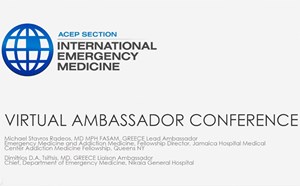
Jack and Jill of all Trades (and Master of Most): Practice Environments for Emergency Physicians
By Chadd K. Kraus, DO, DrPH, MPH, FACEP
Immediate Past Chair, Young Physicians Section
As an emergency physician, we are fortunate to have a plethora of practice environments available to meet our professional and personal interests and skills. We are highly skilled at care across the continuum of healthcare, from out-of-hospital to post-acute care. Traditionally, emergency medicine practice was considered either “community” or “academic,” largely a distinction based on whether you worked in an ED with a residency program.
With the evolution of hospital and health system mergers and acquisitions, this established classification has become inadequate to fully capture the spectrum of EM practice. While many academic EPs still work primarily in EDs that are based in hospitals that are primary sites for training programs, many academic faculty work in “hybrid” positions where a portion of their time is spent in EDs away from the primary residency or academic center. Still other academic physicians work in critical access hospitals or free standing EDs as part of their clinical work. Similarly, many hospitals that were formerly considered to be “community EDs” have medical students, residents, and fellows training in them, changing the role of the “community EP.” Interestingly, a recent study conducted by ABEM suggested that CONCERT scores were similar between emergency physicians practicing in academic and community settings (Marco, et al. Am J Emerg Med, May 2019, PMID: 30078653)
Beyond the “community, “academic,” or “hybrid” models of emergency medicine, many EPs have expanded their careers into practice environments that don’t include an ED at all. EPs have unique expertise in systems of care making practice in areas such telemedicine, community paramedicine/mobile integrated healthcare, and expanded systems of EMS care viable practice environments for emergency physicians to develop as leaders. EPs continue to be the jacks and jills of all trades when faced with the evolving practice environments of 21stcentury acute care medicine.



